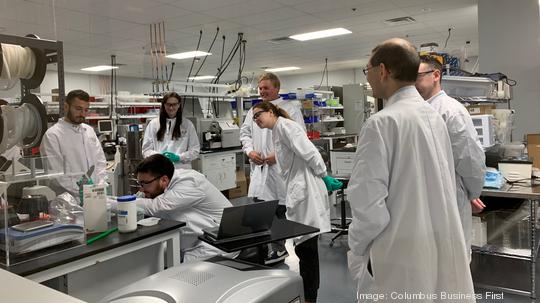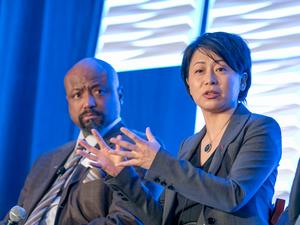
At a Washington, D.C., conference this week known as the “Super Bowl of science” for gene and cellular therapy, high-ranking professionals in the field – from cities better known as biomedical hubs – were asking when startups in Columbus will have openings.
“There is a buzz about Columbus,” said Michael Triplett, who led one Nationwide Children’s Hospital gene therapy spinout to acquisition and is in early stages leading another.
Nonetheless, while companies and cities are attracting attention, industry leaders said, Ohio's regenerative medicine industry needs to do more to build a statewide brand.
Triplett was among Central Ohio biotech executives who left the massive annual scientific conference mid-week, on the same flight from D.C., for an Alliance for Regenerative Medicine event highlighting Ohio’s emerging industry cluster.
"It’s one of two U.S. states where we have focused our attention," said Paige Bischoff, senior vice president of global public affairs for the international advocacy group, flagging Texas as another area of interest. "We’re here specifically because of Ohio’s commitment to the cell and gene therapy."
The NIH is funding about $800 million in regenerative medicine research statewide, said Matt McFarland, vice president of commercialization at Nationwide Children’s. That federal imprimatur indicates the agency sees promise for getting an idea to market, he said. Children's alone is participating in 30 clinical trials for regenerative medicine.
Central Ohio has built a biotech ecosystem that includes inventors and researchers at the pediatric hospital and collaborator Ohio State University, which last month formed an institute to accelerate the process of getting therapies to the market. The region is home to a growing number of spinoffs and startups developing therapies, like AmplifyBio, in-demand specialty manufacturers like Andelyn Biosciences, and startup Forge Biologics, which does both. And it's landed key expansions from giants Amgen and Sarepta Therapeutics.
The alliance also has members in Cleveland, such as Cleveland Clinic and publicly traded Athersys, and Cincinnati, where Cincinnati Children's Hospital is launching a manufacturing joint venture.
"We have an entire economy developing around this groundwork that was laid," BioOhio CEO Eddie Pauline said in a panel discussion. "There’s another wave of investment and innovation on the horizon."
But when Pauline travels around the country, he said, he encounters people surprised to learn Nationwide Children's is in Ohio.
"Our story needs to be more than: 'Ohio is cheap,'" Pauline said.
The field should follow the economic development pattern of other industries, he said, by collaborating and highlighting Ohio's strengths such as talent.
"I would describe where we’re at right now as 'emerging,'" said Tyler Allchin, managing director for the healthcare industry at JobsOhio, the statewide economic development organization. "There’s a lot of room to grow. ... The market doesn’t know it’s an Ohio brand."
Gary Charbonneau, Sarepta Therapeutics senior vice president of research and early development, said he grew up in California and lived on the East Coast – so he knew little about Ohio before being named general manager of its growing R&D center in Columbus.
"I thought I was doing a big favor to Sarepta by uprooting myself," Charbonneau said. "I was really quite surprised."
He experiences the same thing when recruiting.
"I can hear it in their voice: 'Ohio. What’s there for me?'" Charbonneau said. "We need exposure. We need advertisements – the beautiful skyline here, the rivers running through the city."
Other needs for the field: capital, lab space, specialized construction skills for those labs, and most importantly workforce development, including K-12 STEM education.
Triplett said his fellow chemical engineering graduates in the 1990s mainly left the state, but now there are job opportunities here.
"Universities are willing partners to develop programs helping the industry," Triplett said. "That is something we need to do with urgency."
Forge Biologics has already hired five students, CEO Tim Miller said, who came through a program the company developed last summer with Cleveland's Case Western Reserve University to train in clean-room manufacturing skills.
About half of Sarepta's hires are recent college graduates, Charbonneau said, but even if they have a decade of experience they'll need to spend three months in intense training on technology the company invented.
About one-fourth of Forge's manufacturing staff don't need a four-year degree, COO Jaysson Eicholtz said.
"Some of the best people you get haven’t had that college exposure, because you're teaching them fresh," he said.







